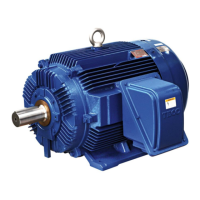Why is my TECO Engine motor overheating?
- HHannah StoutAug 16, 2025
If your TECO Engine motor is overheating, it could be due to several reasons. Possible causes include overload, intermittent overload, under-voltage, over-voltage, a clogged ventilation duct, ambient temperature exceeding 450C, friction between the rotor and stator, a blown fuse (resulting in single-phase rotation), poor contact in circuit switches or the starting switch, or an unbalanced three-phase voltage. You can lighten the load, check the circuit capacity and power source, remove any foreign matter in the duct, lower the ambient temperature, repair any friction issues, install the specified fuse, and check and repair circuit switches. If there is an unbalanced three-phase voltage, check the circuit or consult the power company.


